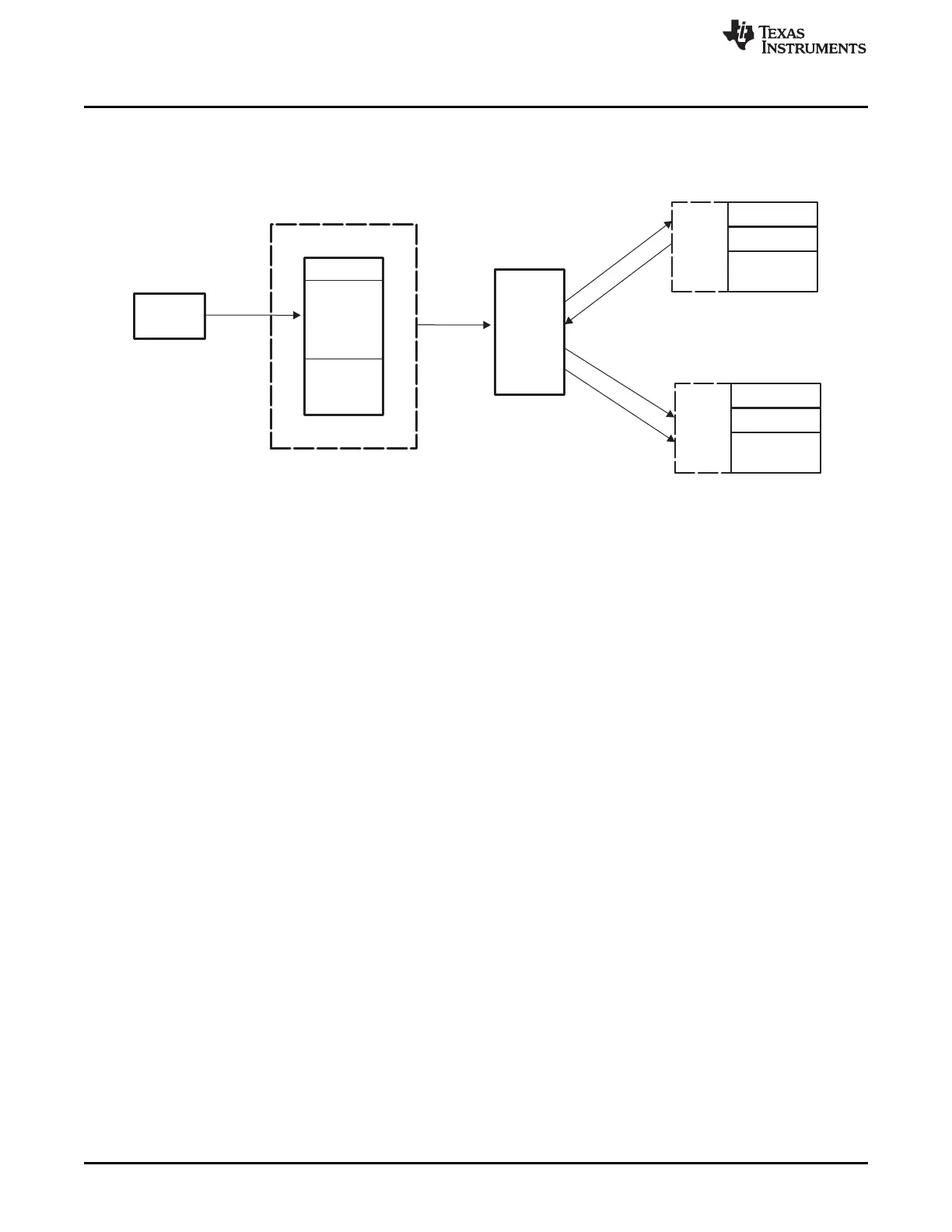Userwrite
TR
SrcBuffer
DstBuffer
Submission
PaRAM
EDMA3CC
EDMA3TC0
PRIVID=0,
PRIV=0
Memory
Protection
Attribute
Memory
Protection
Attribute
L2Page
9F0000h
L1DPage
F07800h
CPU
fromuser
Privilegelevel
PRIVID=0
PaRAM
entry5
PRIVID=0,
PRIV=0
Readreq
PRIVID=0,
PRIV=0
Read
Write
Access
allowed
AID0=1
UW=1
AID0=1
UR=1
Accessallowed
Functional Description
www.ti.com
Figure 11-20. Proxy Memory Protection Example
11.3.11 Event Queue(s)
Event queues are a part of the EDMA3 channel controller. Event queues form the interface between the
event detection logic in the EDMA3CC and the transfer request (TR) submission logic of the EDMA3CC.
Each queue is 16 entries deep; thus, each event queue can queue a maximum of 16 events. If there are
more than 16 events, then the events that cannot find a place in the event queue remain set in the
associated event register and the CPU does not stall.
There are four event queues for the device: Queue0, Queue1, Queue2, and Queue3. Events in Queue0
result in submission of its associated transfer requests (TRs) to TC0. Similarly, transfer requests that are
associated with events in Queue3 are submitted to TC3.
An event that wins prioritization against other DMA and/or QDMA pending events is placed at the tail of
the appropriate event queue. Each event queue is serviced in FIFO order. Once the event reaches the
head of its queue and the corresponding transfer controller is ready to receive another TR, the event is
de-queued and the PaRAM set corresponding to the de-queued event is processed and submitted as a
transfer request packet (TRP) to the associated EDMA3 transfer controller.
Queue0 has highest priority and Queue3 has the lowest priority, if Queue0 and Queue1 both have at least
one event entry and if both TC0 and TC1 can accept transfer requests, then the event in Queue0 is de-
queued first and its associated PaRAM set is processed and submitted as a transfer request (TR) to TC0.
See Section 11.3.11.4 for system-level performance considerations. All of the event entries in all of the
event queues are software readable (not writeable) by accessing the event entry registers (Q0E0,
Q0E1,…Q1E15, etc.). Each event entry register characterizes the queued event in terms of the type of
event (manual, event, chained or auto-triggered) and the event number. See Section 11.4.1.4.1 for a
description of the bit fields in the queue event entry registers.
11.3.11.1 DMA/QDMA Channel to Event Queue Mapping
Each of the 64 DMA channels and eight QDMA channels are programmed independently to map to a
specific queue, using the DMA queue number register (DMAQNUM) and the QDMA queue number
register (QDMANUM). The mapping of DMA/QDMA channels is critical to achieving the desired
performance level for the EDMA and most importantly, in meeting real-time deadlines. See
Section 11.3.11.4.
912
Enhanced Direct Memory Access (EDMA) SPRUH73H–October 2011–Revised April 2013
Submit Documentation Feedback
Copyright © 2011–2013, Texas Instruments Incorporated

